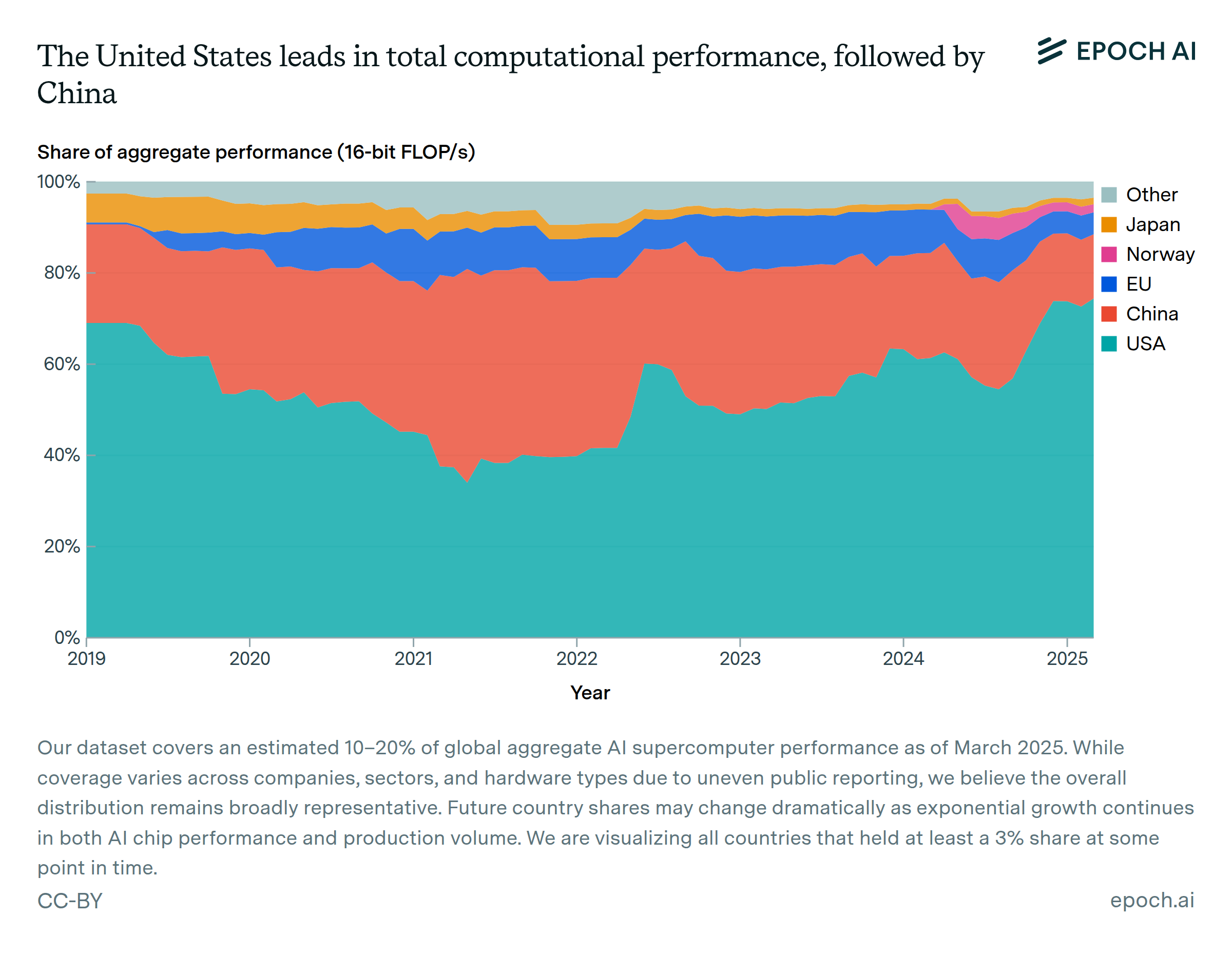US Leads Global Data-Centre Boom, But Power Demands Raise Big Energy Questions
The United States has cemented its dominance in the global data center race, hosting roughly 5,500 facilities—more than the rest of the world combined. Driven by a wave of investment in artificial intelligence, construction spending reached nearly $40 billion in 2025, giving the U.S. around 44% of global data capacity.
China trails with about 26%, but its data centers tend to be larger and newer. In computing power, the gap is even wider: the U.S. accounts for around three-quarters of global GPU cluster performance, compared to 15% for China, reflecting the dominance of U.S. tech giants in AI infrastructure.
Across the United States, data centers are not evenly distributed — and the power sources behind them vary just as widely. Virginia remains the undisputed leader, with over 600 sites concentrated in Loudoun County’s “Data Center Alley.” Most of this capacity draws from the regional PJM grid, still heavily reliant on natural gas and coal, though operators like Amazon and Google have signed large-scale solar and wind power purchase agreements to offset emissions.
Texas, home to more than 400 facilities, benefits from a deregulated electricity market and one of the country’s strongest wind and solar sectors, though grid volatility remains a risk. California’s data centers, meanwhile, are supported by a higher share of renewables and hydropower, but face rising costs and stricter environmental rules.
Elsewhere, new hubs in Iowa, Ohio, Oregon, and North Carolina are emerging where cheap land, fiber access, and lower-carbon power mixes make expansion easier. Oregon’s centers often rely on hydropower, while Iowa’s major tech campuses tap into the state’s robust wind generation, giving them some of the cleanest electricity footprints in the country.
This vast digital footprint comes at a cost. Data centers already account for a growing share of U.S. electricity demand, and analysts warn usage could double by 2030, straining grids and driving up local energy prices. The challenge for policymakers will be to balance the booming AI economy with the infrastructure needed to power it sustainably.


